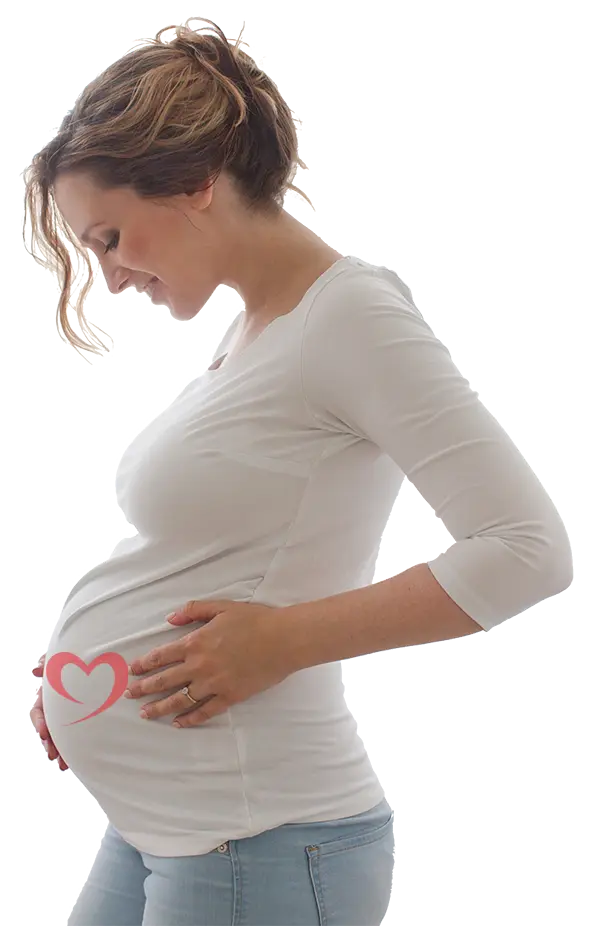One of the most common and best methods is to use IVF.
This method is used in case of obstruction of the fallopian tubes, pelvic adhesions, low sperm count and low sperm motility, and in all cases where the sperm does not reach the ovum in the uterus. Iran with the best experts of IVF provides clients with high quality healthcare services in the field of IVF. in the following we discuss the IVF in Iran.





Is there a treatment for infertility?
Yes – infertility and sterile are treated. Couples with infertility and sterile can be treated with methods such as internal and external uterine insemination, intraocular sperm injection, embryo donation and other methods, but first each patient should know what conditions his body needs for consultation with a doctor. Accepts pregnancy.
One of the most common and best methods is to use IVF.
This method is used in case of obstruction of the fallopian tubes, pelvic adhesions, low sperm count and low sperm motility, and in all cases where the sperm does not reach the ovum in the uterus.
In terms of the price of health services, Healtha aims to offer the most competitive prices with other countries so that the price of Healtha services is much lower than the price of similar services around the world.
In this section, you can watch videos related to your treatment.
These videos are just a small part of a big change in Healtha.
Our patients’ experience of Healtha treatment
Infertility is the inability to conceive after 12 months of unprotected intercourse. This means that a couple is not able to become pregnant after a year of trying. However, for women aged 35 and older, the inability to conceive after 6 months is generally considered infertility.
Most infertility cases — 85 to 90 percent — are treated with conventional therapies, such as drug treatment or surgical repair of reproductive organs.
In infertile couples where women have blocked or absent fallopian tubes, or where men have low sperm counts, in vitro fertilization (IVF) offers a chance at parenthood to couples who until recently would have had no hope of having a “biologically related” child.
IVF involves several steps — ovarian stimulation, egg retrieval, sperm retrieval, fertilization and embryo transfer. One cycle of IVF can take about two to three weeks, and more than one cycle may be required.
You can contact the Healtha Response Center by visiting the website and completing the consultation form and providing communication channels, including your phone number, mobile phone, and email.
Healtha has a representative office in many countries of the world, where you can negotiate for more information and to obtain a Healtha representative visa. You can also obtain a health visa to travel to Iran by consulting with us and visiting the Iranian embassy. Also, airline ticket services, transportation, reception, translator, hotel, treatment, in-city and out-of-city tour will be provided during your stay in Iran.
Couples with infertility and sterile can be treated with methods such as internal and external uterine insemination, intraocular sperm injection, embryo donation and other methods. In the same way, Iran is a destination for IVF treatment. because IVF in Iran is of low cost and high quality. in the following we will discuss the IVF In Iran.
Various methods are used to treat infertility and sterile, the most important of which are:1. Artificial insemination (IVF)
One of the most common and best methods is to use IVF.
This method is used in case of obstruction of the fallopian tubes, pelvic adhesions, low sperm count and low sperm motility, and in all cases where the sperm does not reach the ovum in the uterus.
In this method, sperm are taken from the man and ovum from the woman during a short and temporary anesthesia.
In the laboratory, the sperm and the ovum are then put together so that the sperm can enter the ovum and fertilize the ovum and the fetus (embryo) is formed.
The unicellular embryo then becomes a multicellular embryo by successive division.
The multicellular embryo is transferred to the uterus after 48 to 72 hours for implantation and pregnancy.
One of the advantages of this method is that fertilization is visible before embryo transfer, and if the sperm does not fertilize with the ovum, the fertilization conditions can be changed next time.
In addition, if the patient does not have fallopian tubes, IVF is performed without any problems.
This procedure is simple and painless and is performed without the need for anesthesia.
In normal intercourse, only 10% of the sperm reach the cervix from the vagina, but in the IUI method, sperm are taken from the liquid man, and thus more and better quality sperm enter the uterus, thus increasing the chances of fertility.
In this procedure, during IUI, healthy sperm is placed directly in the uterus while the female ovary releases one or more ovum to fertilize, and this procedure is performed in two cases:
-The first case:
When a man has problems such as low sperm volume, low sperm count, low sperm motility or decreased libido.
-second item:
When a woman has problems with cervical secretion and an immunodeficiency that leads to infertility or can not have natural intercourse due to pain and certain conditions such as vaginismus.
One of the treatment methods for infertility or sterile is embryo donation, which is done in two cases:
-The first case:
When a man has infertility problem and is unable to produce sperm.
-second item:
In couples whose infertility treatment methods have failed for any reason. Provided, of course, that the woman’s age from the organs of her body can nurture a donated fetus in her womb.
With this method, those who have uterine problems such as endometrial polyps, uterine septum or intrauterine scar tissue can be treated with hysteroscopy surgery.
Reproductive technology (ART) is a fertility treatment in which ovum and sperm are used.
This method is used if the number of healthy male sperm is low.
The microinjection method is quite similar to IVF, except that healthy sperm are injected precisely into the ovum.
In this case, the chances of fertilizing the ovum are greatly increased.
In this method, as in the IVF method, after the ovum are fertilized, they are transferred to the mother’s uterus.
In women with diseases of the fallopian tubes or genitals, the doctor will perform laparoscopic surgery (inserting several tubes into the abdomen with a camera) to repair and correct the problem of the genitals.
In this procedure, which is used to fix uterine problems such as polyps and fibroid tumors or to repair tubal problems, the doctor inserts a hysteroscopy through the vagina into the uterus to examine the problems and, if necessary, remove extra tissue or sores or tubes. It opens the blocked uterus.
Women over the age of 40 who have ovarian failure and as a result their ovaries are not working properly or their ovum are not of good quality, but their uterus is normal, they can become pregnant by donating ovum.
In this method, after taking fertility drugs and stimulating ovulation in the donor, several ovum are extracted from his ovaries, then the donated ovum are combined with the recipient’s sperm and fertilization takes place in the laboratory, then the fertilized ovum are transferred to the recipient’s mother.
Women who have a uterine problem and are unable to conceive but have healthy ovaries and ovum can use a surrogate uterus.
In this method, the couple’s ovum and sperm are combined outside the laboratory, and the fertilized ovum is transferred into the uterus of the donor of the surrogate uterus, and the embryo grows and is born in another woman’s uterus.
None of the infertility treatments guarantee fertility.
For this reason, the cost incurred may not lead to the desired result and the need to repeat part or all of the treatment process or to choose a different treatment method.
Note that repeating treatments, chances, and changing them increase your chances of getting pregnant. For this reason, once a treatment is not successful, it should not discourage you.
Your doctor may suggest that you try another method after trying it three times, as many experts believe that a treatment that is not successful after three periods is ultimately less likely to work.
Read Also
The probability of success of infertility treatment depends on many factors such as age, accurate diagnosis of the cause and quality of medical services provided, but according to statistics, the chance of success in treating infertility problems is acceptable and promising.
But knowing the following is necessary to treat infertility:
1. Modern medical equipment as well as the mastery of the treating physician in various infertility treatment methods is one of the most important factors in the treatment of infertility and sterile.
About 35% of women who take clomiphene citrate become pregnant during treatment, usually between three and six periods.
3. In the iui method, if concomitant use of fertility drugs to stimulate ovulation, the chance of pregnancy increases by 10 to 20% in each treatment period.
4. The chance of success in the ivf method for women 34 years and younger is about 50% per period compared to other methods, and in women 35 to 37 years; the chance of success is reduced by about 10% compared to younger women.
Making some lifestyle changes for men and women, such as quitting smoking, limiting caffeinated beverages such as coffee, not drinking alcoholic beverages, improving diet and losing weight if needed, can greatly increase a person’s chances of getting pregnant.
6. Anxiety and worry can also be one of the factors that can contribute to the worsening of infertility and failure of treatments. It is best to avoid anxiety during treatment.
7. Try to share your problems and concerns with your doctor.
8. According to the reputation and experiences of the treating physician, always trust him.
9. Choosing an infertility treatment center is very important in terms of reputation and quality of infertility treatment, so the patient must refer to special centers and reliable doctors to increase the success rate.
10. Repeating treatments and changing the treatment method increases the chances of pregnancy, the patient is more likely to become pregnant. Therefore, how often the treatment is not successful should not discourage the patient.
11. Therefore, your doctor may suggest that after trying one treatment three times, the patient try another because many experts believe that a treatment that is not successful after three periods is ultimately less likely to work.
12. Well-equipped clinics and hospitals can greatly increase a patient’s chances of success by taking more modern measures.
13. In treatments that involve the use of ovum or donated embryos, the success rate is higher in more well-equipped clinics.
Read Also
1. Before choosing a treatment method, get enough information from your doctor about the costs of that method.
2. None of the infertility treatments guarantee fertility.
3. The cost incurred may not lead to the desired result and the need to repeat part or all of the treatment process or to choose a different treatment method.
4. Trust Healtha Medical Park and contact our consultants.
IVF treatment or in vitro fertilization causes that an egg comes out from egg storage of woman so that sperms would be able to fertilize them out of body in an IVF laboratory. Sperms can be either man’s own or be donated. When the egg is fertilized, it is known as embryo and after some days it begin to be divided, every embryo which is assessed to have biggest chance for pregnancy and it is returned to uterus. The embryo attaches in uterus lining and develops more, exactly after fertilization in a usual way. If there are many embryos with high quality, they can be freeze for returning for subsequent cases.
The stages of IVF treatment is as follows:
Before an IVF treatment can be started, you need to undergo a fertility investigation to see if there are any causes for the infertility. Regardless of whether you have done the investigation with us or at another clinic, you are welcome to us for treatment. On the first visit to us, you will meet a doctor who carefully reviews your history and plans the layout for your treatment. After the planning, you get to meet a nurse or midwife who shows how the different drugs work.
With IVF treatment he women are stimulated with hormone injections ( FSH-Hormone) which get some eggs for develop at the same time. For avoiding early egg loss, the woman own hormone production should be suppressed though another hormone preparation.
There are two different stimulation protocols, long and short. With long stimulation a nasal spray with suppressing hormone is taken within two weeks before starting of FSH injection. This is called agonist protocol. The short variant of stimulation is composed of FSH injection and then hormone injection (suppressing) within about 5 days which is called antagonist protocol.
In many cases, the methods may be considered the same, but maybe there are some reasons to choose one method over another. Which treatment method is suitable for you is determined by your responsible doctor.
Stimulation of hormones is done through about 10- 14 days and within this time one can follows the activity in ovaries with ultrasound and blood test with 2-3 cases. When the eggs are mature, they are removed from the ovaries by emptying the ovaries through a thin needle through the vaginal wall during ultrasound guidance. The woman is given a local anesthetic and a fast-acting painkiller to reduce discomfort. The embryologists who work in the lab take care of the fluid from the egg sacs and look for the eggs using a microscope.
The procedure takes about 15 minutes and when it is finished, you can have coffee in your patient room. After an hour or so, you can leave the clinic. The man is of course welcome to be present at the egg retrieval. On the same morning as the egg retrieval takes place, the man may also leave a semen sample, where the best sperm are recovered by so-called gradient centrifugation.
Approximately 50,000 sperm are added to each of the eggs retrieved. Eggs and sperm are placed in a bowl with nutrient solution in a heating cabinet overnight and the sperm swim to the eggs. In some cases, when the sperm cannot fertilize the egg on its own, a sperm is injected directly into each egg by microinjection (ICSI). Usually 50-70% of the eggs are fertilized; partly depending on the quality and maturity of the eggs, but also depending on the quality of the sperm.
The next day, the eggs that have been fertilized are checked; these then have two precursors to a nucleus, one from the sperm and one from the egg. Later in the day, these fuse together into a common nucleus and the fertilized egg can begin to divide. The first day to two cells, the second day to four and so on and is now called embryo.
Four-cell embryo the second day after egg retrieval – when the embryo consists of 4-6 cells – an assessment of the embryos is made and the best embryo is selected to be returned to the uterus. If there are many fertilized eggs, it can be an advantage to grow embryos until day 5 for return, as they have developed into so-called blastocysts. Through blastocyst culture, embryologists can see which embryos have the best chance of developing into a pregnancy. The reason why embryos are not always grown for five days is that the uterus is the absolute best environment. There is therefore always a balance between producing the best embryo and providing the best growth environment.
The return is done with the help of a thin catheter that is inserted into the uterus via the cervical canal. The procedure is performed as a regular gynecological examination, takes about 5-10 minutes and is not painful.
If there are several high-quality embryos on the day of return, they can be frozen and later retrieved for possible return in the future. It is only in exceptional cases that we return two embryos, to avoid twin pregnancies. To support the ability of the uterine lining to receive the embryo, the hormone Progesterone is given for about three weeks in the form of vaginal pills or gel.
You can live as usual in the weeks after the return, but you should refrain from medication if possible. If the pregnancy test, which is taken 18 days after egg retrieval, shows positive, an ultrasound examination is performed about 5 weeks after the return of the embryo, to see that it has established itself properly in the uterus. If there is no pregnancy, a return visit to the doctor is booked to discuss how to proceed. It is usually difficult to state the reason why there was no pregnancy. The chances are assessed individually after each trial and in some cases minor adjustments are made, for example by the hormone dose. The chance of getting pregnant is the same for each treatment cycle and within the framework of three treatments, about 70% of the treated couples have had children
No. 326, St. Khaje Nasir , St. Shariati Tehran , Iran
info @ healtha.health
+98 910 398 2050
© 2024 Healtha Corporate . All rights reserved.
If you are seeking advice or treatment from Healtha
Please fill in the submission form and send it .
Rest assured that you will be contacted by Healtha at the earliest opportunity without wasting time .